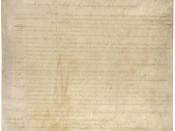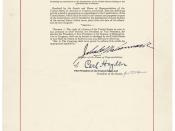Extra Credit Lecture The United States Constitution's Fourth Amendment deals with legal search and seizure of property. In a short program called "Know Your Rights"� sponsored by the NAACP, the terms and conditions of the sometimes misunderstood Fourth Amendment were clarified and explained through the help of a youth group, a police spokesperson, a defense attorney, and the district attorney. Its goal was to clear the lines of communication between policemen and the community. Different scenarios were played out depicting scenes where the Fourth Amendment was at question. One such scene showed a principle confiscating a purse from a student after having reasonable suspicion that there was a weapon contained inside. The question was: Does that violate the Fourth Amendment? I learned that the answer to that question was no because under reasonable suspicion and school rules, the principle has the right to protect themselves and other students against violence.
Various other scenes were acted out and the outcomes were very helpful and informative for me to learn about the amendment.
According to Perry and Perry, there is definitely stratification in social class in the U.S. Also, there is discrimination between social classes and different trends that go with different classes. One statement in the presentation was that homes belonging to lower income families were more often searched without a warrant. They also stated that African Americans are more likely to be stopped and searched than Caucasians. These two facts can be evidence that there is discrimination between classes and races people. Perry and Perry also discusses deviance. Whether something is deviant or not depends on what the society thinks is appropriate and inappropriate at a given time, place, or occasion. Different people may have different definitions of deviance versus non-deviance. When a person is being stopped...


